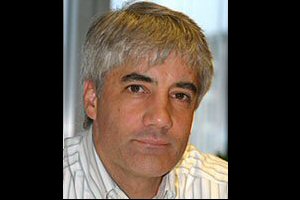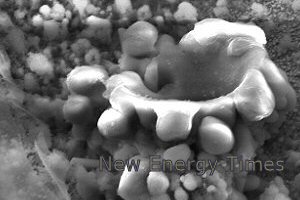It’s Not Cold Fusion… But It’s Something
An experiment that earned Stanley Pons and Martin Fleischmann widespread ridicule in 1989 wasn’t necessarily bogus.
By Steven B. Krivit, Michael J. Ravnitzky on December 7, 2016
It’s Not Cold Fusion… But It’s Something
An experiment that earned Stanley Pons and Martin Fleischmann widespread ridicule in 1989 wasn’t necessarily bogus.
By Steven B. Krivit, Michael J. Ravnitzky on December 7, 2016

Stephen Ritter, Chemical & Engineering News journalist
Dec. 2, 2016 – By Steven B. Krivit –
On Nov. 7, 2016, Chemical & Engineering News, the magazine of the American Chemical Society, published a deeply flawed cover story by Stephen Ritter about low-energy nuclear reactions (LENR). The article contained four major errors.
The same day, I sent a letter to Bibiana Campos-Seijo, the editor-in-chief of C&EN. The magazine’s word-count limitation policy on letters to the editor permitted me to address only one error. Campos-Seijo published my letter on Nov. 28.
I have known Stephen Ritter for a decade. He has repeatedly failed to distinguish between “cold fusion,” the erroneous idea that deuterium nuclei can overcome the Coulomb barrier at room temperature, and LENRs, which do not make such a presumption. I explained the terminology problem to Ritter in 2012.
In August 2016, I sent him an advance copy of my book Hacking the Atom. In September, soon after I told him that it was on sale, Ritter told me that he was writing a new article on LENR. Given what he wrote in C&EN, Ritter apparently read nothing in the book and missed its most important points. Continue reading »

Rossi feeding the water from his E-Cat through a black hose and into a drain hole in the next room. Click for video.
Nov. 15, 2016 – By Steven B. Krivit –
A Nov. 7, 2016, deeply flawed cover story by Stephen Ritter in Chemical & Engineering News, a publication of American Chemical Society, requires me to correct the record. Although Ritter has written on the topic of LENR (low-energy nuclear reactions) before, the subject is extremely challenging for nonspecialist journalists. Landmines are easy to encounter. Confusion is common.
Unfortunately, as his article reveals, Ritter relied primarily on a single source for key facts about LENRs and did not check those facts independently. Ritter was duped by a professor who has had a long career in science and worked for a reputable university but is one of several scientists who in recent years has promoted fraudulent claims about LENR research. Ritter declined to speak with me on the record about his article.
Summary: Ritter’s story contains three major factual errors:
1. Ritter wrote that electrochemical LENR systems can produce more than 25 times as much power as they draw. In fact, typical results of those systems only produce excess heat at an average peak of 1.38 times the electrical input power.
2. Ritter wrote that nickel-hydrogen LENR systems can produce more than 400 times as much power as they use. In fact, the best credible results of those systems have produced excess heat similarly, at an average peak of 1.3 times the electrical input power.
3. Ritter wrote that Andrea Rossi has developed working versions of industrial 1-MW thermal power plants. In fact, Rossi has been convicted of fraud in a previous business venture, and all evidence indicates that he has nothing but smoke and mirrors now and has probably perpetrated a fraud in his current power-plant claims.

SPAWAR image of LENR cathode showing melted palladium and possible evidence of flash boiling
Nov. 15, 2016 – By Steven B. Krivit –
I received a question last week from Tony T., a reader of my book Hacking the Atom in the United Kingdom.
“Have you ever compiled a list of the data showing anomalous heat, as figures preferably? I have seen the article by Kunimatsu et al., 1992, which contains several hundred,” Tony wrote. “Are there any equivalents?”
Here are a couple of basic points to answer this excellent question. Continue reading »
Nov. 9, 2016 – By Steven B. Krivit –
Chinese Professor Xing Zhong Li, a longtime believer in the hypothetical concept of strong-force room-temperature fusion, has changed his thinking about the underlying LENR (low-energy nuclear reaction) process.
New Energy Times learned that Li, a professor in the Department of Physics at Tsinghua University, presented his ideas at the Satellite Symposium of the 20th International Conference on Condensed Matter Nuclear Science, on Sept. 28-30, 2016, in Xiamen, China. The conference was sponsored in part by the Natural Science Foundation of China.
| © 2025 newenergytimes.net |